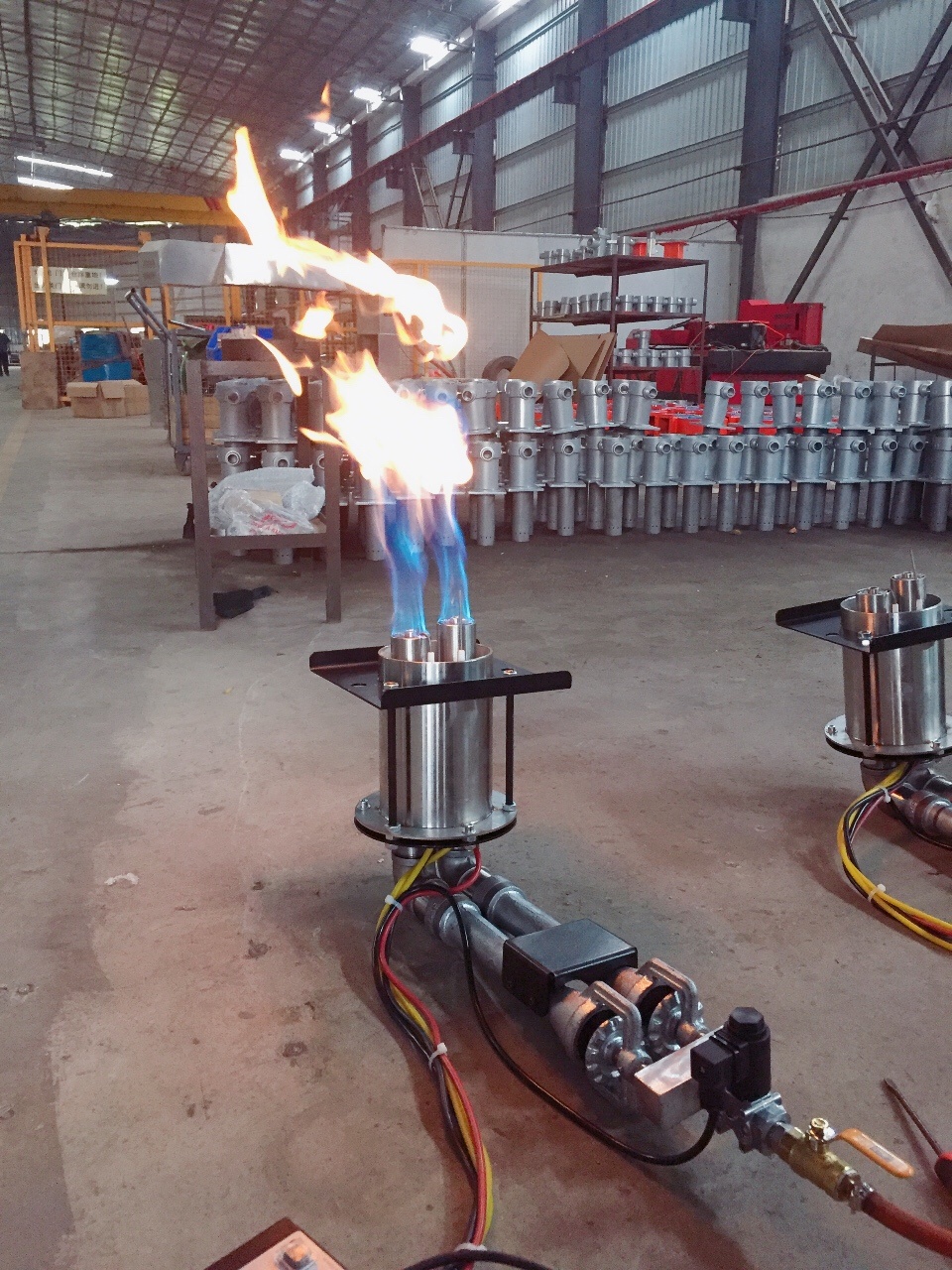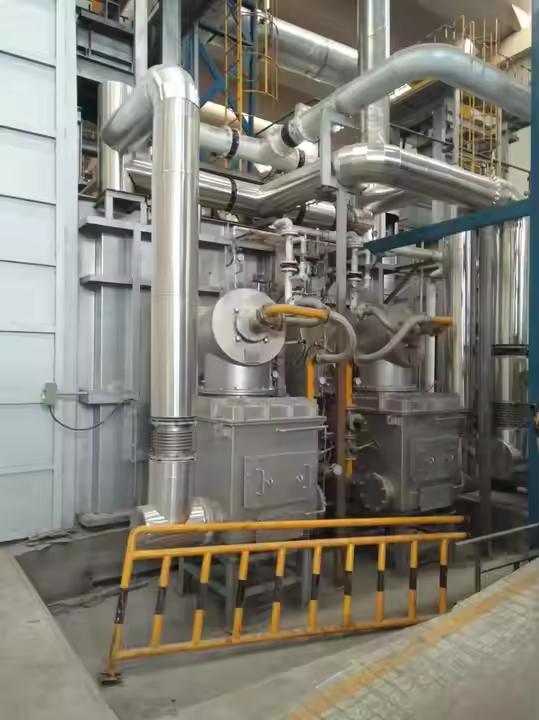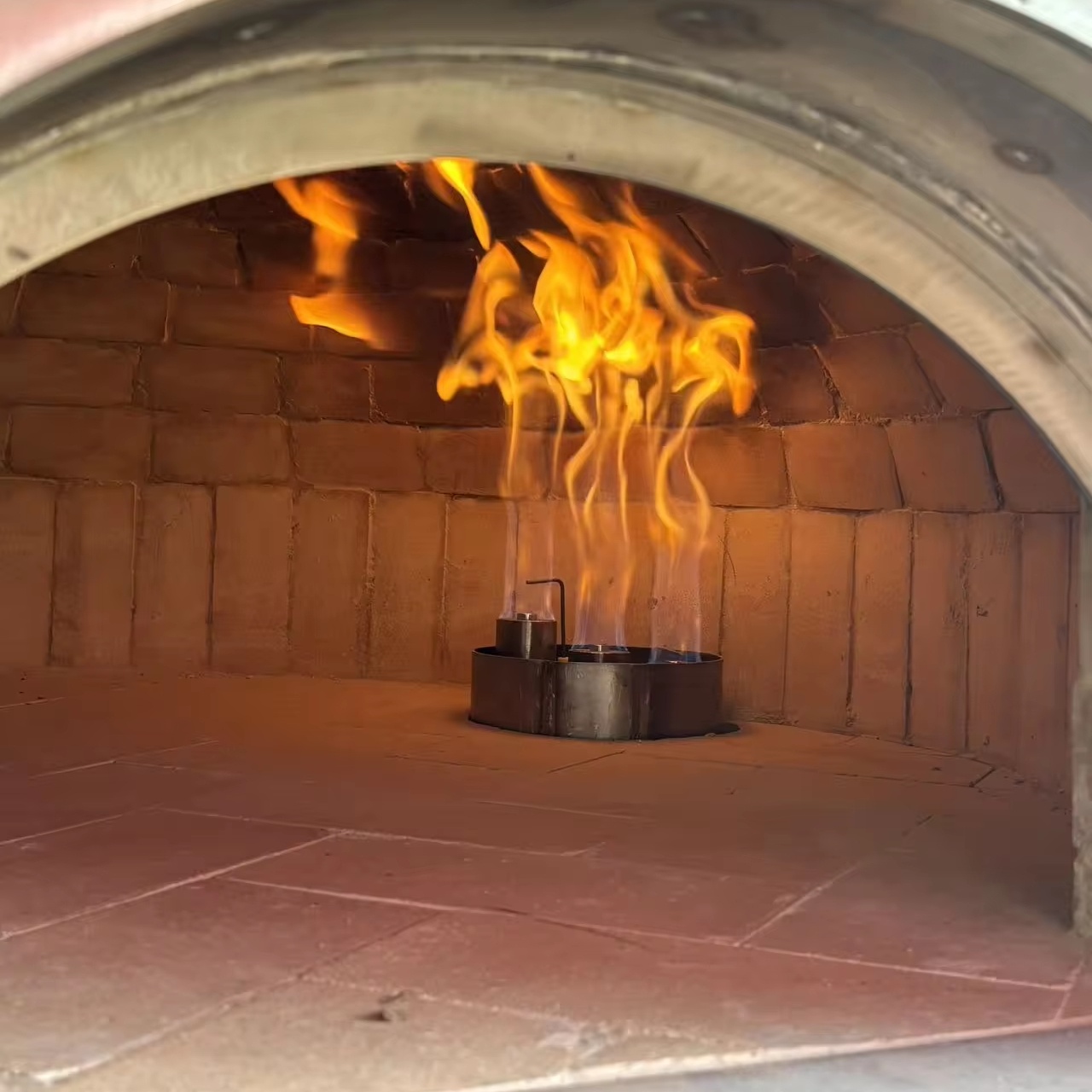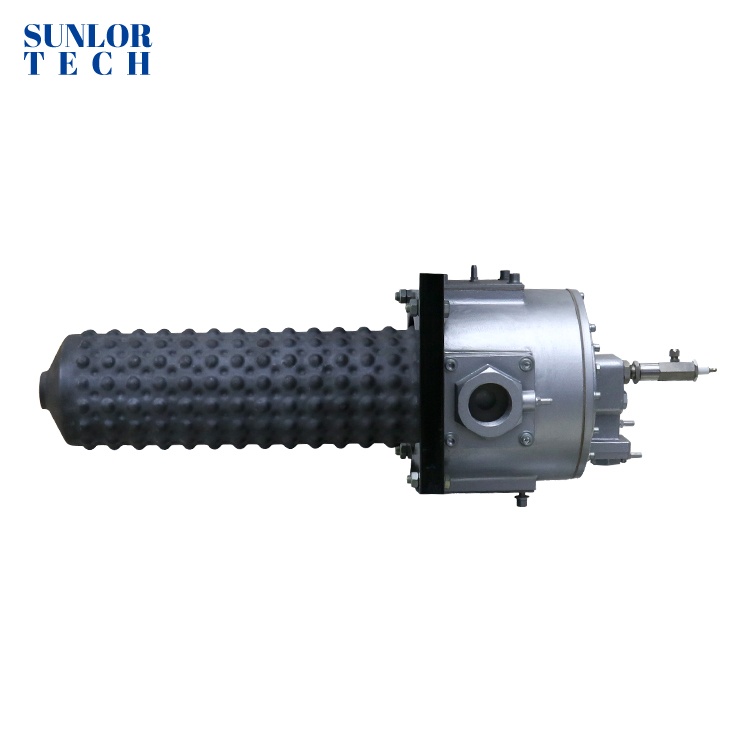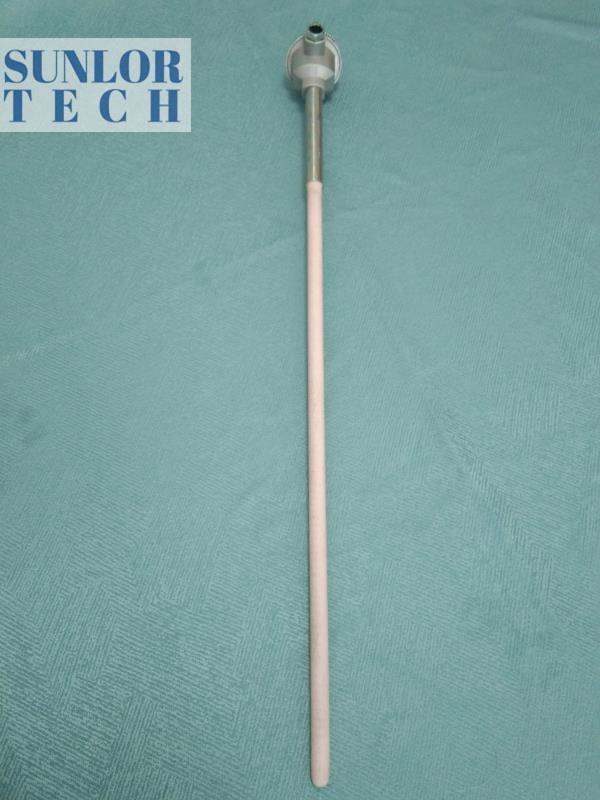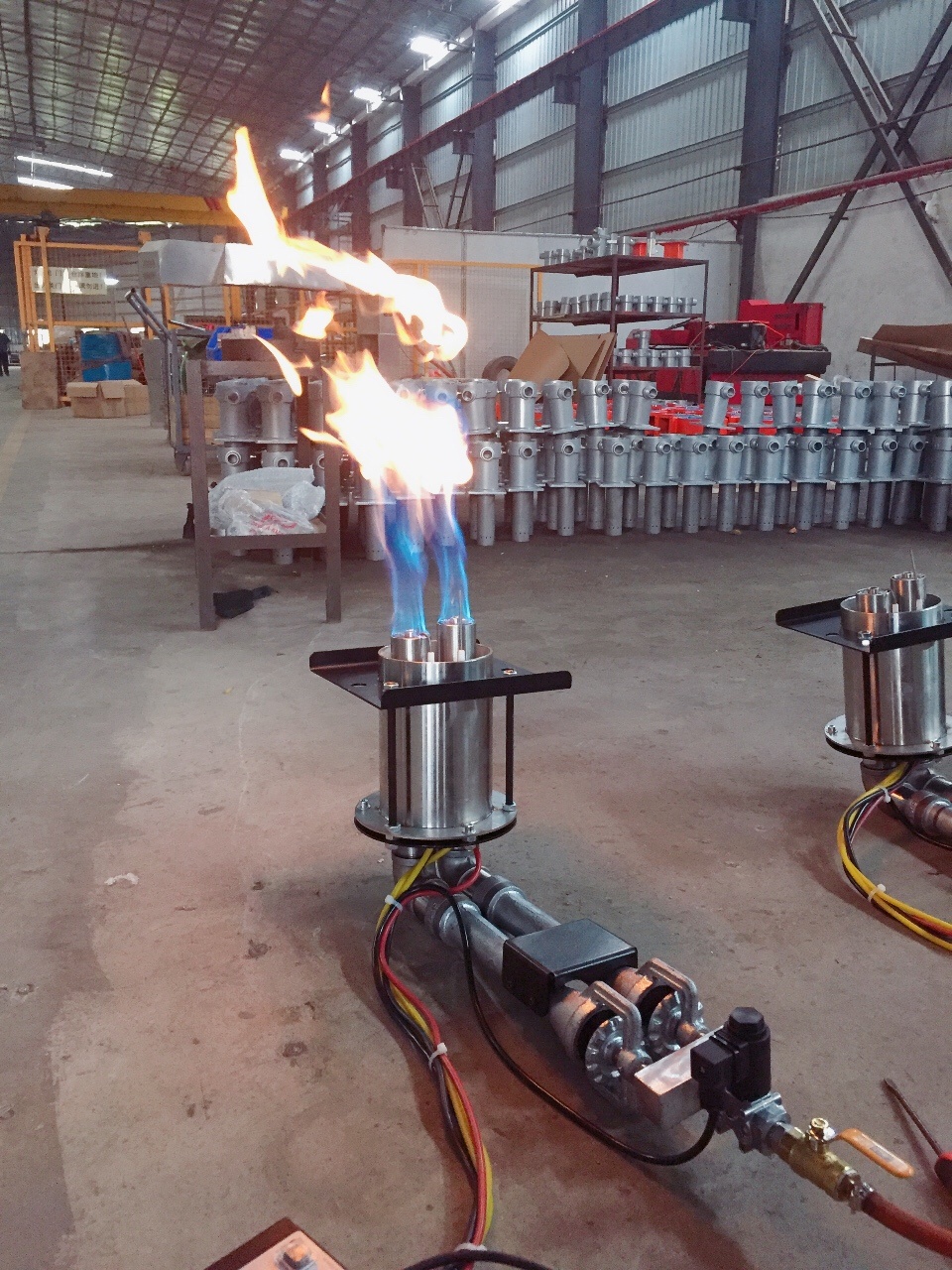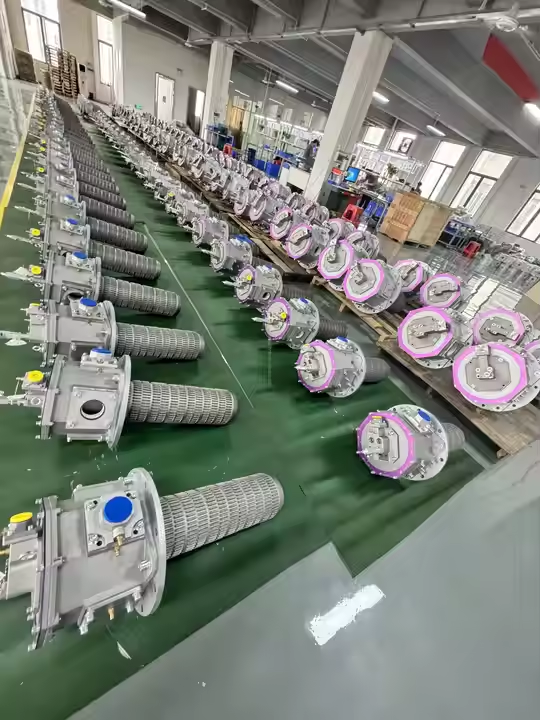
-
[BLOG] Causes of self-suction burner flameout
2025-07-02
-
[BLOG] Use of self-preheating burner
2025-06-24
-
[BLOG] The function of boiler electrode
2025-06-20
-
[BLOG] Selection of ignition electrode
2025-06-17
-
[BLOG] Ignition method of industrial burner
2025-06-13
-
[BLOG] Function of solenoid valve
2025-05-24
-
[BLOG] Key points of burner ignition control
2025-05-23
-
[BLOG] Working principle of liquefied gas burner
2025-05-17
-
[BLOG] How to choose the right burner?
2025-05-15
-
[BLOG] Highlights of industrial burners
2025-05-10
-
[BLOG] Components of a gas-fired boiler system
2025-05-09
-
[BLOG] Advantages of ultra-low nitrogen burners
2025-05-08
-
[BLOG] Understand the hot blast furnace burner
2025-04-28
-
[BLOG] Advantages of industrial burners
2025-04-26
-
[BLOG] The main features of the Venturi burner
2025-04-24
-
[BLOG] Analysis of gas burner structure
2025-04-23
-
[BLOG] Use of industrial burners
2025-04-21
-
[BLOG] Industrial kiln energy saving technology
2025-04-17
-
[BLOG] How the burner system works
2025-04-16
-
[BLOG] Industrial furnace burner selection
2025-04-15
-
[BLOG] Composition of natural gas burner system
2025-04-14
-
[BLOG] Industrial burner troubleshooting
2025-04-11
-
[BLOG] How the solenoid valve works
2025-04-10
-
[BLOG] Control system for natural gas burner
2025-04-09
-
[BLOG] Industrial burner for ignition controller
2025-04-03
-
[BLOG] How to use industrial burners
2025-04-01
-
[BLOG] The role of the tunnel kiln gas burner
2025-03-28
-
[BLOG] Advantages of natural gas burners
2025-03-27
-
[BLOG] Operating process of industrial burners
2025-03-22
-
[BLOG] Structure of the industrial gas burners
2025-03-20
-
[BLOG] Industrial burning mouth classification
2025-03-15
-
[BLOG] How the Venturi burning mouth works
2025-03-07
Venturi burner working principle is the use of gas energy inhalation air, gas under a certain pressure, with a certain flow rate from the nozzle, into the suction contraction tube, gas by itself energy into an air, in the ejector gas and an air mixture, and then through the head hole outflow, burning, form the flame.
Venturi burner usually uses gas to direct air, from this point, also belongs to the direct burner. According to the different gas pressure, wenturi burner can be divided into high pressure, medium pressure and low pressure ignition. Low-pressure self-priming burner is often used in civil gas stoves. Its main components are composed of ejector and burr head. The seemingly simple ejector also contains nozzle and shrink tube, mixed tube and pressure expansion tube.
The function of the ejector has the following three aspects: first, to emit low energy gas with high energy gas, and make the two mixed evenly. In atmospheric burners, air is usually injected from the atmosphere with fuel gas. Second, the required residual pressure is formed at the end of the injector to overcome the resistance loss of airflow in the head of the burner, so that the gas and air mixture can obtain the necessary speed at the fire hole outlet to ensure the stable operation of the burner. Third, transport a certain amount of gas to ensure the load required by the burner. -
[BLOG] Classification of industrial kilns
2025-03-06
Industrial furnace classification furnace is made of refractory materials for calcined materials or products equipment, according to the burning materials, cement kiln, ceramic kiln, ceramic kiln, ceramic kiln, glass kiln, lime kiln according to the operation method can be divided into continuous kiln (tunnel kiln), semi-continuous kiln and intermittent kiln, can be divided into flame kiln and electric kiln, flame kiln vehicle can be divided into kiln, push plate kiln, bottom kiln (kiln), conveyor belt kiln, step beam kiln and air cushion kiln, single channel kiln, double channel kiln and multi-channel kiln. Generally, large kiln fuel is mostly heavy oil, light diesel oil or coal gas, natural gas. The kiln is usually composed of four parts: kiln chamber, combustion equipment, ventilation equipment and conveying equipment. ·
Most of the electric kiln takes electric furnace wire, silicon carbon rod or molybdenum disilicate as the heating element. Its structure is relatively simple and easy to operate. In addition, there are various atmosphere kilns, etc.
In specific industries, there are more subdivided types of kilns, such as cement rotary kiln, glass pool kiln, steel blast furnace and some equipment in the converter · chemical industry can also be classified as kilns. But generally in the sense of industrial kiln range mainly refers to metal and inorganic materials calcination equipment, kiln is roughly divided into box type, well type, shuttle type, net belt type, rotary type, vehicle type, push plate type tunnel resistance furnace, vacuum torch, gas protection furnace, ultra high temperature tube torch (carbon tube), tungsten molybdenum powder roasting, reduction furnace and other high, medium and low temperature industrial furnace, Working temperature 200~2500°C ·
Can be used for varistor, lightning arrester valve plate, structural ceramics, textile ceramics, thermistor, electronic ceramic filter, chip capacitor, porcelain dielectric capacitor, thick film circuit, sheet resistance, magnetic materials, powder metallurgy, electronic powder, rare earth chemical industry, focusing potentiometer, ceramic substrate, high aluminum ceramics and their metallization · contact materials, carbide materials, tungsten and molybdenum materials, etc. -
[BLOG] The role of burning the mouth
2025-03-05
Burning burner, also known as burner, is an important part of industrial furnace, its main functions include:
1, provide a combustion place: the burner is the fuel and air mixing and combustion equipment. It is usually installed in specific locations in the heating furnace, such as the kiln head, front and rear arches, etc., to ensure that the fuel can be fully burned.
2, adjust the shape and length of the flame: by adjusting the structure and parameters of the burner, the shape and length of the flame can be controlled, so as to adapt to different process needs and heating objects. For example, the high speed burner can promote the air flow circulation in the furnace through the high speed air flow, and uniform the furnace temperature.
3. Improve combustion efficiency: Modern burner design pays attention to improving combustion efficiency and reducing energy waste. For example, the oxygen-enriched burning nozzle increases the combustion speed and thermal efficiency by increasing the concentration of oxygen in the air, while reducing the emission of nitrogen oxides.
4, reduce pollutant emissions: low nitrogen burner through the classification of combustion technology, reduce the generation of nitrogen oxides in the combustion process, contribute to environmental protection.
5, automatic control: many modern burner is equipped with an automatic control system, which can dynamically adjust the combustion state according to the production demand, improve the production efficiency and product quality.
To sum up, the burning mouth plays a vital role in industrial furnaces, which is not only related to production efficiency and product quality, but also affects energy consumption and environmental protection. -
[BLOG] Selection of burning mouth
2025-03-04
The selection of the mouth is a process involving multiple factors, mainly including the following aspects:
1. Understand the characteristics of gas: first, we need to understand the type of gas used and its main components. Different gas gases with different calorific values will lead to different temperatures reached. For example, the calorific value of natural gas, such as natural gas, liquefied petroleum gas and coal gas, varies 1.
2. Determine the size and power of the burner: according to the actual demand, determine how much of the burner is needed. Generally speaking, the larger the size of the burner, the greater the power. This usually involves asking the customer how many kcal or kilowatts of a burner (power unit).
3, consider the air excess coefficient: if the carbon content in the gas is large, but also need to consider the air excess coefficient. The excess air coefficient required for gas and gas combustion can be set differently, which affects the design of the burner.
4. Select the appropriate burner type: select the appropriate burner type according to the use scenario and requirements. For example, in the hot-dip galvanizing production process, the zinc pot heating furnace uses more heating mode is the gas external heating, mainly the gas and natural gas. In this case, you can choose a high-speed burner or a flat flame burner, these two burner mouths have their own characteristics.
5, consider energy saving and environmental protection requirements: in the choice of burner, but also need to consider the requirements of energy saving and environmental protection. For example, the regenerative burner can realize high temperature air and gas preheating, thus improving thermal efficiency and reducing pollutant emissions.
In conclusion, when choosing the burning mouth, we need to consider the above factors comprehensively, and make a choice according to the specific situation. At the same time, it is recommended to communicate with professional burner manufacturers or suppliers to obtain more appropriate selection recommendations. -
[BLOG] Structure and principle of the burner
2025-03-03
The construction and principle of the burner can vary according to their type and use. The following are the structures and working principles of several common buraks:
1. Process burner: the process nozzle usually adopts a three-flow casing structure, with the central tube conveying oxygen, the middle casing conveying coal slurry, and the outer gap conveying oxygen again. A cooling coil is usually provided at the nozzle. The working principle is that the oxygen of the ring gap of the central cavity and the outer tube is mixed with the coal slurry at the nozzle. Using the impact force of oxygen, the coal slurry is sprayed into the gasifier in the form of high-speed fog to achieve the effect of atomized coal slurry.
2. Gas burner: the working principle of the gas burner is that the blower motor rotates and drives the fan blade to rotate. Due to the principle of centrifugal force, the air is sent out by the rotating impeller at high speed. The air is fully mixed in the mixing room with the incoming fuel (gas or fuel oil). When the gas fuel is used, the gas passes through the control valve into the mixing chamber and mixed with the air. The mixed fuel must be ignited by an ignition system before it is fired into the furnace. The firing mouth is equipped with a booster transformer. When the primary transformer is connected into the power supply, the transformer secondary generates high voltage, which is sent to the ignition electrode through the high voltage cable, and the ignition electrode breaks through the air for discharge, forming an arc and lighting into the mixed fuel.
3, Venturi burner: Venturi burner usually uses natural gas or liquefied petroleum gas as fuel. Gas enters from the entrance, and the air is brought in by the high-speed gas airflow. The gas is mixed with the air in the mixing tube, and then enters a section of the expansion tube. The mixed gas comes out of the expansion pipe into the stainless steel (ceramic) nozzle, where the gas mixture is quickly heated to the ignition temperature and burned. The advantages of Venturi burner include the low air excess coefficient of gas complete combustion, low pollutant emissions, premixing of gas and air, high combustion temperature, energy saving and environmental protection design, and the structure to avoid tempering and flameout phenomenon.
4. The regenerative burner: the working principle of the regenerative nozzle is two burner with heat transfer function, and the other burner is used as the exhaust outlet, and the heat of the flue gas is absorbed to the heat exchanger used as the burning nozzle, so as to achieve the effect of heat accumulation.
5. Flat flame burner: the structure and principle of the flat flame burner is that the gas and air entering the burner nozzle rotate strongly under the action of the cyclone, unfold along the surface of the furnace wall perpendicular to the center line of the burning mouth brick, and are burned out in the first floor space close to the furnace wall, forming a garden plate flame. After using the flat flame burner, because the heat radiation capacity is strengthened, the temperature field is uniform, so the heating speed is fast, the metal oxidation burning rate is low, which has a significant effect on the uniform heating of steel, rapid heating and fuel saving.
In conclusion, different types of burner mouths have different structures and working principles, and they are designed to meet specific industrial needs, such as improving combustion efficiency, reducing pollution emissions, optimizing the temperature distribution in the furnace, etc. -
[BLOG] Maintenance of burning mouth
2025-02-28
-
[BLOG] Industrial combustion device
2025-02-25
-
[BLOG] How to choose a boiler burner
2025-02-13
-
[BLOG] What are the classifications of burners?
2025-02-05
-
[BLOG] how many fuel types burner do you have ?
2025-01-31
-
[BLOG] Understanding Industrial Burners
2024-07-31

Gas Solenoid valve
Wind/Air Actuator valve
Manual gas and wind valve
Gas air propotional Valve


Gas regulator pressure valve
Flame detection and burner ignition controllers
Blowers
Accessories







